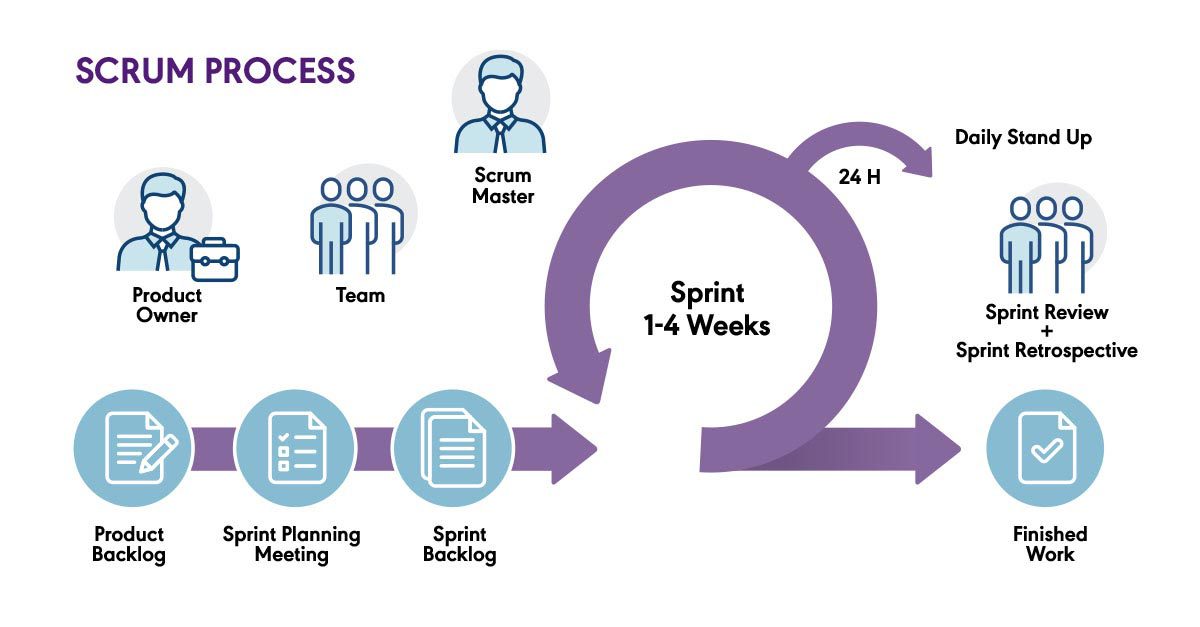What Is Scrum? | Core Principles
Scrum is a widely adopted agile methodology used in software development to manage complex projects. It is a flexible and iterative approach that emphasizes adaptability, collaboration, and incremental progress. Initially developed for software development, Scrum's principles and framework have found applications in various industries beyond IT, including marketing, education, healthcare, and more.
Origins of Scrum:
Scrum emerged in the early 1990s, formulated by Jeff Sutherland, Ken Schwaber, and others who aimed to address the challenges associated with traditional, rigid project management methodologies. Its name originates from the game of rugby, where it refers to a method of restarting play. In the context of software development, Scrum similarly emphasizes teamwork, adaptability, and iterative progress.
Core Principles:
Scrum operates based on several core principles:
Iterative Development: "what is Scrum" breaks down a project into smaller, manageable units known as sprints, usually lasting 1-4 weeks. Each sprint focuses on delivering a potentially shippable product increment.
Collaboration: It promotes collaboration among team members, including developers, product owners, and Scrum Masters. Cross-functional teams work together closely throughout the project to maximize efficiency.
Adaptability: Scrum is designed to accommodate changes during the development process. It allows for flexibility and encourages teams to adapt to evolving requirements or feedback.
Transparency: Transparency is a crucial aspect of Scrum. The progress, challenges, and work processes are visible to everyone involved, ensuring better communication and understanding within the team.
Key Roles in Scrum:
Scrum defines specific roles within the team:
Product Owner: Responsible for representing the stakeholders' interests and prioritizing the product backlog—the list of features, enhancements, and fixes. They ensure that the team is working on the most valuable tasks.
Scrum Master: Acts as a facilitator, guiding the team in understanding and implementing Scrum principles. They remove impediments, facilitate meetings, and foster a productive and collaborative environment.
Development Team: A cross-functional group responsible for turning product backlog items into increments of potentially shippable functionality during each sprint.
Scrum Artifacts:
Scrum employs several artifacts to support the development process:
Product Backlog: A prioritized list of all desired work on the project. It evolves as new requirements emerge or priorities change.
Sprint Backlog: Comprises the list of tasks the team needs to complete during a sprint. It's derived from the product backlog and is the focus of the team's work for that sprint.
Increment: A product increment is the sum of all the completed product backlog items at the end of a sprint. Each increment must be in a potentially releasable state.
Scrum Events:
Scrum defines specific events to facilitate collaboration, inspect progress, and adapt accordingly:
Sprint Planning: A session where the team plans the upcoming sprint, selects backlog items, and creates a sprint goal.
Daily Stand-up: A brief, daily meeting where team members share progress, discuss challenges, and plan their work for the day.
Sprint Review: Held at the end of each sprint to review and demonstrate the completed work to stakeholders and gather feedback.
Sprint Retrospective: A meeting after the sprint review where the team reflects on the sprint, identifies what went well and what could be improved, and plans adjustments for the next sprint.
Benefits of Scrum:
Flexibility: Allows for changes and adaptations during the project.
Transparency: Provides visibility into the project's progress and challenges.
Customer Satisfaction: Prioritizes delivering high-value features early and often.
Improved Collaboration: Encourages teamwork and communication within the team and with stakeholders.
In conclusion
Scrum is a powerful framework that enables teams to manage complex projects efficiently. Its iterative and adaptive nature, coupled with its emphasis on collaboration and transparency, makes it a popular choice for various industries seeking to enhance their project management methodologies.

Comments
Post a Comment